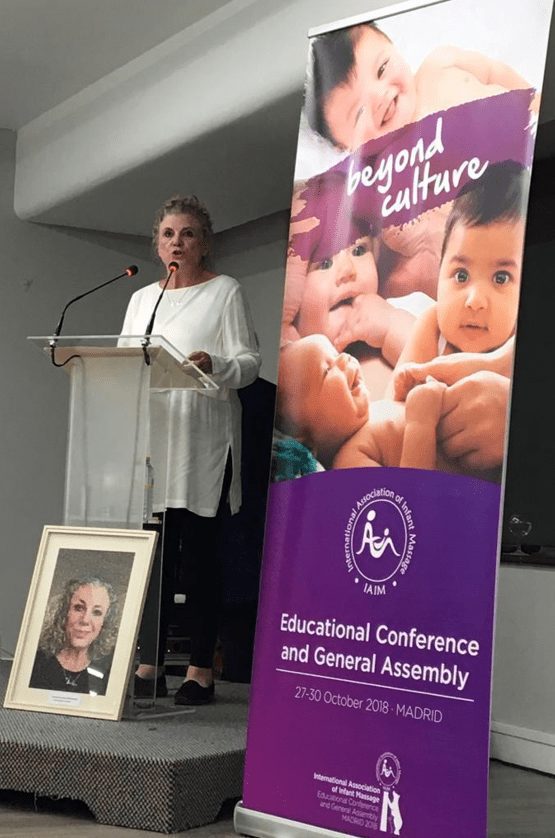by Vimala McClure
Tickling a baby’s toes may be cute but according to recent studies it’s also possible that those touches could help babies learn the words in their language. Research from Purdue University shows that a caregiver’s touch can help babies to find words in the continuous stream of speech.
“We found that infants treat touches as if they are related to what they hear and thus these touches could have an impact on their word learning,” said Amanda Seidi, an associate professor of speech, language and hearing sciences who studies language acquisition. “We think of touch as conveying affection, but our recent research shows that infants can relate touches to their incoming speech signal. Others have looked at the role of touch with respect to babies forming an attachment and physical development. But until now the impact of touch on language learning has not been explored.”
The findings are published in Developmental Science and a video of Seidl explaining the research is available online. “Parents may pause before saying an infant’s name, but they almost never do so for other words. This research explored whether touches could help infants to find where words begin and end in the continuous stream of speech. They need to find words before they can attach real meaning to their words,” Seidl said. “Because names of body parts are often the first words that babies learn and touching is often involved when caregivers talk about body parts, we speculated that touch could act as a cue to word edges.” This information is yet another positive benefit of Infant Massage. Parents can identify the baby’s body parts as they move through the massage. Using the phrase “I – Love – YOU!” when doing the Sun and Moon stroke on the baby’s belly is universally stimulating and often babies, as they grow older, will say the phrase with mom.
Forty-eight English-learning 4-months-olds were tested at Purdue’s Infant Speech Lab in two groups as they sat on a parent’s lap facing an experimenter while listening to a pre-recorded continuous stream of speech of nonsense words. In the first experiment, every time a nonsense word, such as “dobita,” was spoken, the experimenter touched the baby’s knee. This occurred two dozen times. In addition, the word “lepoga” was played 24 times, but the infant was only touched once on her elbow during the playing of this word. The other 23 touches to the elbow occurred on other syllable sequences. Following this listening, the babies participated in a language preference study, and almost all showed that they had pulled “dobita” out of the continuous stream of speech. This was the word that was reinforced by aligned touching.
In the first months of life, babies are already actively interested in the world around them. At the Baby Speech Lab at Purdue University, researchers study infants in order to learn more about their newly-developing speech perception and language skills. They are interested in how young children develop language. Specifically, the researchers will be studying infants’ early understanding of speech.
The details of individual studies vary, but typically the child is seated on the mother’s lap and they measure the amount of time he or she responds to various examples of speech. Their studies are not clinical assessments. Rather, they look at results from a group of infants in the same age range. Their research aims to advance our understanding of normal language development.
Seidi says she is interested in whether babies’ language can be predicted later on from early measures of speech perception. She said, “If we look at speech perception and learning in a 6-month-old can we predict their language ability at 3 years? If we can find out what kinds of learners young children are, we could target their learning environment to their learning style.”
//www.laportecountylife.com/community/education/41297-study-touch-influences-how-infants-learn-language
(c) Copyright Vimala McClure 2012. Please contact webmaster@iaim.net for permission to use.




